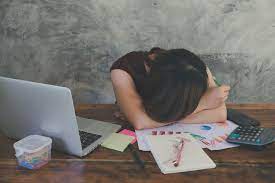The holiday season is a time for your staff to unwind and bond – a well-deserved break from the daily grind. A joyful, memorable holiday staff party not only instills camaraderie but also enhances teamwork and overall work performance. To make your party fun and engaging, we have curated a list of 15 holiday staff party games that promise to entertain without making you groan.
1. Gift Wrap Relay
Split your team into pairs, then have each partner race to wrap a present together using only one hand each.
2. Ugly Holiday Sweater Contest
Encourage everyone to wear their quirkiest holiday sweaters and hold a contest for the ugliest with prizes for the winners.
3. Two Truths and a Wish
Each participant shares two truthful statements about their holiday experiences and one outlandish or fictional holiday wish. The listeners must guess the wish.
4. Snowball Fight
Divide your office into two teams, then pass out paper to crumple up into “snowballs.” Hold an indoor snowball fight, making sure it stays friendly.
5. Holiday Movie Trivia
Test your staff’s knowledge of classic holiday movies with a fun trivia game.
6. Ornament Craft-off
Provide crafting supplies and have teams create unique ornaments in a set time limit. Vote on the best creations to display in the office.
7. Reindeer Antler Toss
Create teams of two, with one person holding onto pipe cleaner reindeer antlers on their head while the other attempts to hook rings onto them from a distance.
8. Christmas Tree Cup Stack
Have players race to stack plastic cups in the shape of a Christmas tree while wearing oven mitts.
9. Snowman Drawing Contest
Distribute markers and sheets of paper, then blindfold participants as they draw their best snowman in under 60 seconds.
10. Cookie Decorating Challenge
Split into teams and have a cookie decorating contest with a set time limit.
11. White Elephant Gift Exchange
Create a twist on the classic white elephant gift exchange by adding silly challenges or tasks to unwrap gifts.
12. Human Christmas Tree
Form teams and choose one person to be a “human Christmas tree.” The others will race against the clock to decorate their teammates using provided materials like tinsel, bows, and ornaments.
13. Festive Karaoke
Set up a karaoke machine and encourage your coworkers to sing their favorite holiday tunes.
14. Holiday Pictionary
Put together a list of seasonal phrases and objects for a fun Pictionary game that tests your staff’s drawing skills and guessing prowess.
15. Santa Limbo
Get creative by converting the classic limbo game into a holiday version. Each participant wears a Santa hat while trying to pass under the limbo bar without knocking it over or touching it.
By incorporating these fun and engaging games into your holiday staff party, you’ll create laughter-filled memories that strengthen bonds amongst employees for years to come!











